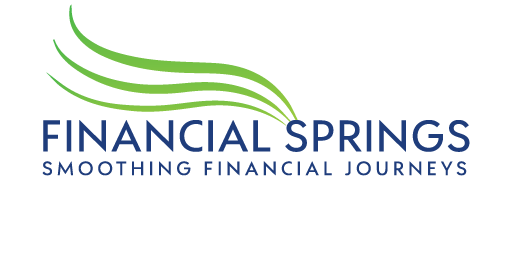Attached is a good summary of the budget highlights, without the politics. I’ve highlighted the points that stand out as most important to our clients and your families.
Some points:
- It’s been suggested that the extra home care packages should see the waiting list almost finished
- Increased infrastructure spending should be a boost for these investments
- More help for first home buyers and single parents
- Downsizer contribution age reduced from 65 to 60 (but starting 1 July 2022)
- No work test to make super contributions for those 67 to 75 (again from 1 July 2022)
- The increased spending on childcare, women’s safety and mental health
Centrepoint’s Budget Summary;
INTRODUCTION
It seems like no time has passed since the last Federal Budget.
In many ways, that is correct. As a result of the COVID-19 pandemic, the 2020 Budget was delayed until October 2020. And what a year it has been.
The 2021 Budget, brought down on 11 May 2021, may well be the last Budget before the next Federal Election is held. With the next Federal Election due to be held sometime between August 2021 and May 2022, the Budget includes a number of “sweeteners’ to keep the electorate favourably disposed towards the incumbent government.
So, what did the Budget include?
Important notes:
- Many of the Budget announcements cannot take effect until relevant legislation has been passed. In addition, some initiatives may not commence until a later date, e.g., 1 July 2022.
- This Summary only contains brief details of the Budget announcements. The “devil will be in the detail” which will be available once relevant legislation is available.
THE STATE OF THE ECONOMY
While the economy is not out of the woods yet, things are looking a lot more promising than 12 months ago, and even from when the 2020-21 Budget was delivered in early October 2020.
The deficit for 2020-21 has been revised downwards to $161bn (from $213bn), while the deficit for 2021-22 if forecast to be $106bn.
The Budget priorities include:
- Getting Australians through COVID-19
- Setting Australia up for the future by supporting employment and implementing reforms
- Guaranteeing high quality and sustainable services for Australians, and
- Building Australia’s resilience, security, and defence capability.
AGED CARE
The recent Royal Commission into Aged Care Quality and Safety highlighted many systemic problems within the sector.
As a result, the government has committed up to $18bn of funding over the next four years to fund significant improvements in the aged care sector including:
- Replacing the Aged Care Act,
- 80,000 new home care packages to be delivered over two years from 2021-22,
- Greater access to respite,
- Resources to continue supporting My Aged Care,
- Design and plan a new home care package,
- Improved front line care for residents in residential aged care and those accessing respite,
- A government funded Basic Daily Care Fee Supplement of $10 per day,
- Funding to upskill the aged care workforce,
- Expansion of the aged care assessment
BUSINESS
Debt recovery action
The threat of debt recovery initiated by the Australian Taxation Office, particularly during a period when businesses are struggling to get back on their feet following the disruptions resulting from the pandemic, is a constant worry for business owners.
Small businesses will be able to apply to the Administrative Appeals Tribunal to pause or modify debt recovery action initiated by the Australian Taxation Office, where the debt is being pursued through the Administrative Appeals Tribunal.
This initiative will be available to businesses with an aggregated turnover of less than $10m.
Digital economy
The Budget includes a provision for $1.2bn to be invested in Australia’s digital future.
In a pre-Budget joint statement* made by the Prime Minister and Senator Jane Hume, they announced “the strategy targets investment in emerging technologies, building digital skills, encouraging business investment and enhancing Government service delivery.” This will assist businesses to transform and capitalise on growing reliance.
Infrastructure
The Budget provides an additional $15bn for road, rail and community infrastructure projects. Much of this will flow through to businesses providing services, and to those seeking work in the sector.
FAMILIES
Child-care
To boost workplace participation, the government will make a further $1.7bn investment in child-care. This is aimed at cutting the cost of living and to help boost workplace participation. As a result, it is expected that around a quarter of a million families will be able to undertake more work by removing the structural disincentives to take on additional work.
The initiative is expected to cost around $1.7bn and will be targeted towards low and middle-income families.
By way of an example, a family on a family income of $140,000 per annum with two children is child-care four days each week is expected to be $124.80 per week better off.
HOME OWNERSHIP
Amid surging house prices in many parts of Australia, the Budget includes several initiatives designed to ease the burden of access to home ownership, at least for some.
New Home Guarantee
Single parents with dependants will have access to a new Federal Government initiative that will provide an 18% deposit guarantee on a home purchase. This will allow eligible applicants to purchase a home with as little as a 2% deposit. The plan is for 10,000 guarantees to be made available.
An additional 10,000 places will be available to first home buyers looking to build or purchase a newly built home. 2021-22 will be the second year this initiative has been available, allowing eligible applicants to secure their purchase on as little as a 5% deposit.
First Home Super Saver Scheme
This scheme, first introduced in 2017, allows first-time homeowners to access voluntary contribution made to superannuation for the purpose of purchasing a first home. The maximum amount that can currently be released under the Scheme is $30,000, plus associated earnings. The maximum is to be increased to $50,000, plus earnings. This is expected to be available from 1 July 2022.
Public, social and community housing
Increasing homelessness and reduced access to affordable housing is an increasing problem for countries like Australia.
In the Budget, the government has announced a further $124.7m will be available to the States to contribute to addressing the lack of affordable housing.
SOCIAL SECURITY
The Budget included several measures affecting social security, some of which have already been implemented.
Announcements included:
- The introduction, from 1 January 2022, of a consistent four-year waiting period for newly arrived residents across most welfare payments,
- Increase in the basic rate of working age payments (e.g., JobSeeker, Youth Allowance) of $50 per fortnight – this was implemented from April 2021,
- Increase in the income-free area for working age payments to $150 per fortnight, from 1 April 2021,
- Extension of the temporary waiver of the Ordinary Waiting Period for certain payments, to 30 June 2021.
Pension Loans Scheme
Changes will be made to enhance the operation of the Pension Loans Scheme (the government’s reverse mortgage offering) including:
- Allowing access to up to 2 lump sum advances in any 12 month period, limited to up to 50% of the maximum annual rate of age pension,
- Introduction of a No Negative Equity Guarantee,
- Improved promotion and branding to the Pension Loans Scheme to encourage further
SUPERANNUATION
Downsizer contributions
Downsizer contributions allow people aged 65 or older the ability to make a one-off contribution to superannuation of up to $300,000 from the sale proceeds from an eligible dwelling.
This initiative has been popular with many older Australians looking to prop up their diminishing superannuation when they sell their home, either to downsize, move in with family, relocate to a retirement village, or enter residential aged care.
In the Budget, the government announced they will reduce the age at which downsizer contributions can be made from 65 or 60. This change is expected to take effect from 1 July 2022.
Work test
When a person aged between 67 and 75 wishes to make a voluntary contribution to superannuation, they must meet a work test. That is, they must be gainfully employed or self-employed for a minimum period of 40 hours, worked within 30 consecutive days, in the financial year in which they plan to contribute.
Expected to apply from 1 July 2022, the work test for people aged 67 to 75 will be abolished, allowing many more Australians to top up their superannuation in later years.
First Home Super Saver Scheme Repeated from the home ownership section above
This scheme, first introduced in 2017, allows first-time homeowners to access voluntary contribution made to superannuation for the purpose of purchasing a first home. The maximum amount that can currently be released under the Scheme is $30,000, plus associated earnings. The maximum withdraw is to be increased to $50,000, plus earnings. This is expected to apply from 1 July 2022.
Superannuation guarantee
The government intends to abolish the $450 per month minimum income threshold for superannuation guarantee payments. This is expected to take effect from 1 July 2022.
Self-managed super funds – legacy retirement products
Many SMSFs still have old-style retirement income products in place. The government has announced its intention to allow a two-year window whereby such products can be commuted, along with their associated
reserves, and the commuted value be applied to a modern income stream product.
Products covered will include market-linked income streams, lifetime, and life expectancy pensions. However, the initiative will not extend to flexi-pensions, lifetime products issued by APRA regulated super funds, and public sector defined benefit funds.
Social security and tax treatment will not be grandfathered, and the commuted funds will be taxed as an assessable contribution.
This initiative is expected to take effect from 1 July 2022.
Self-managed super funds – residency
The Central Management and Control test safe harbour is to be extended from 2 years to 5 years and the active member test is to be removed, making is easier for members of SMSFs temporarily absent from
Australia to continue to make contributions during their time overseas.
These changes will apply from the start of the financial year following that in which the amending legislation receives Royal Assent – expected to be 1 July 2022.
TAXATION
Low and middle-income tax offset
Introduced back on 1 July 2018, the low and middle-income tax offset is a temporary measure that provides a tax offset of between $255 and $1,080 for taxpayers with taxable income of up to $126,000.
The low and middle-income tax offset was due to finish on 30 June 2021 however the government announced it will be extended for another twelve months.
Full expensing
This 2020-21 measure is to be extended to 30 June 2023.
It applies to businesses with an aggregate turnover or total income of less than $5bn and allows business owners to deduct the full cost of eligible depreciable assets acquired between 6 October 2020 and first used or installed ready for use by 30 June 2023.
Temporary loss carry-back extensions
Temporary losses from the 2022-23 financial year can be offset against previously taxed profits back to the 2018-19 financial year. This measure is available to businesses with a turnover of less than $5bn.
Medicare levy low-income threshold
The Medicare low-income threshold for singles, families, seniors and pensioners will increase from 1 July 2020 to account for increases in the Consumer Price Index.
For example, family threshold for seniors and pensioners will increase to $51,094 (from $50,191).
WOMEN
The Budget included a specific focus on measures specifically targeting women. These include:
Women’s safety
A further $1.1bn is to be allocated for women’s safety measures that focus on:
- Preventing violence before it happens,
- Delivering front line services,
- Financial support to assist leaving violent relationships,
- Better understanding of the issues by data collection and monitoring,
- Expanded response through the judicial system.
Economic security
- Improved child-care affordability,
- Increasing participation in education, training, and employment.
Health and wellbeing
Measures being supported by the Budget include initiatives covering maternal, sexual and reproductive health, ageing, chronic conditions, preventative health, and mental health.
* A modern digital economy to secure Australia’s future – joint media release – The Hon. Scott Morrison Prime Minister and Senator the Hon Jane Hume Minister for Superannuation, Financial Services and the Digital Economy Minister of Women’s Economic Security – 6 May 2021





